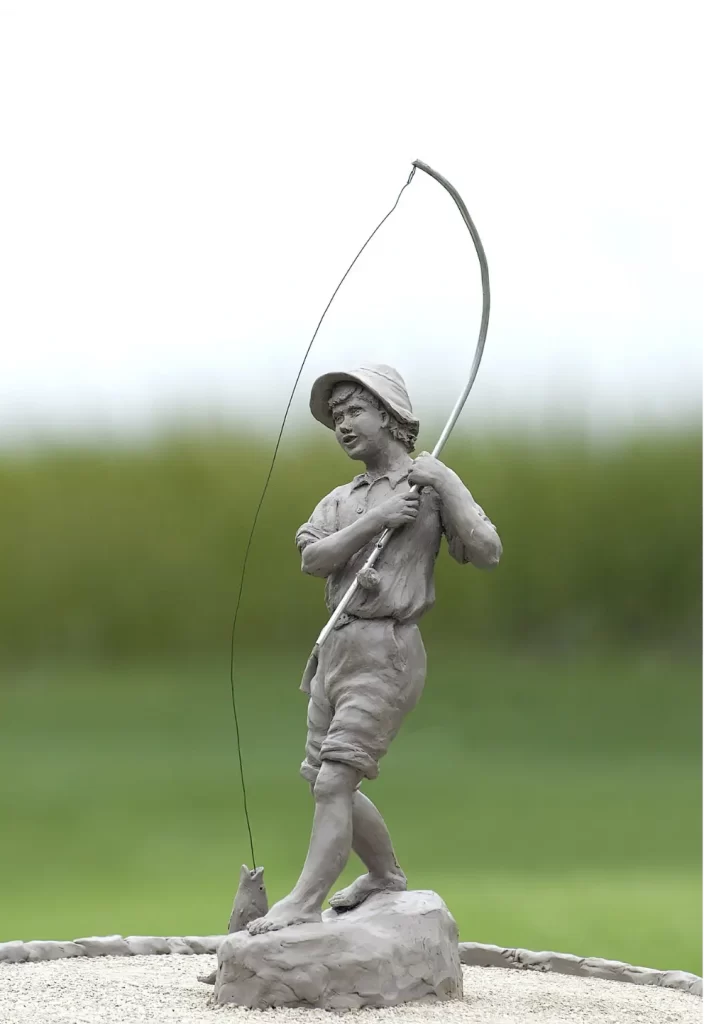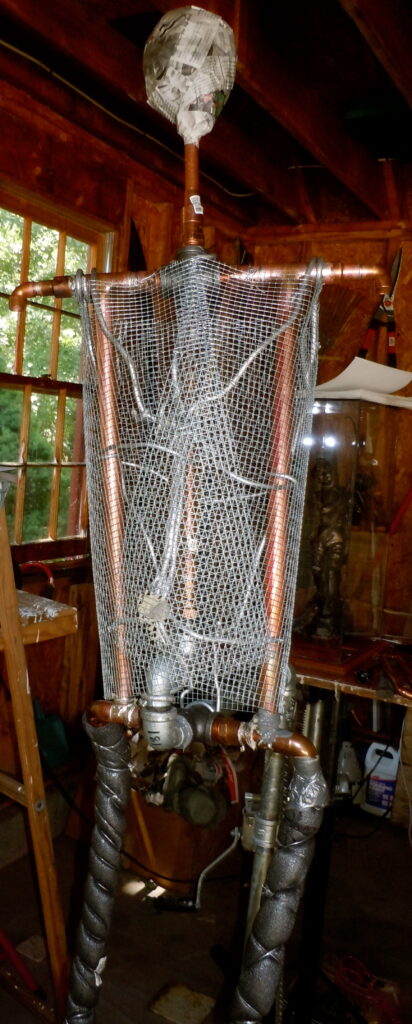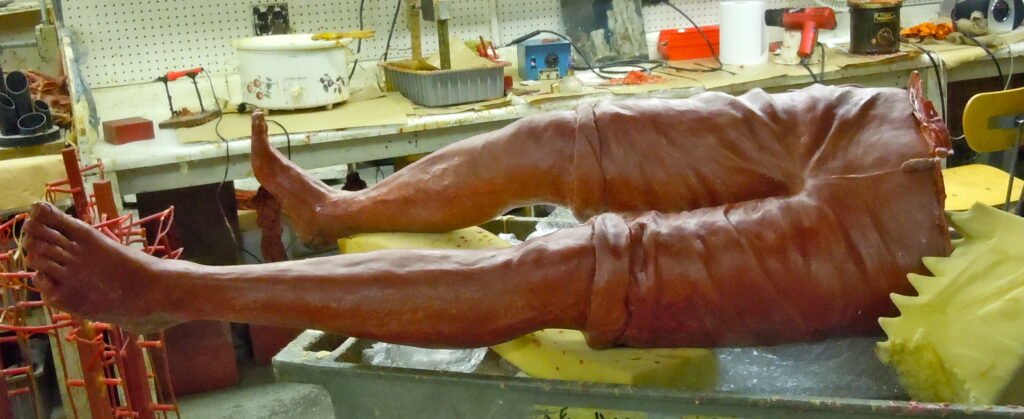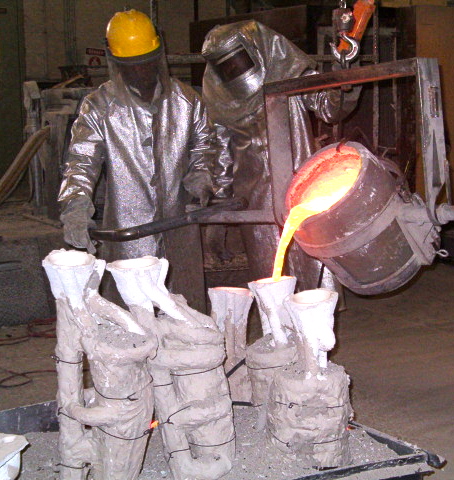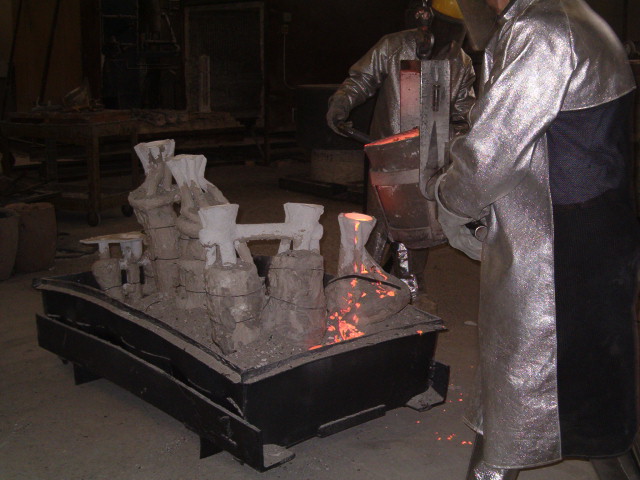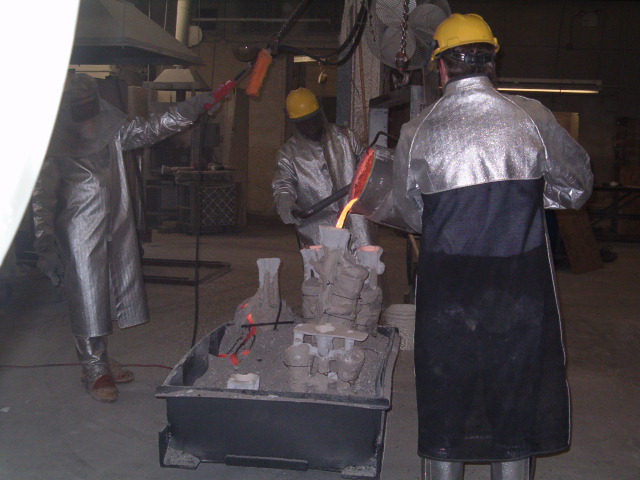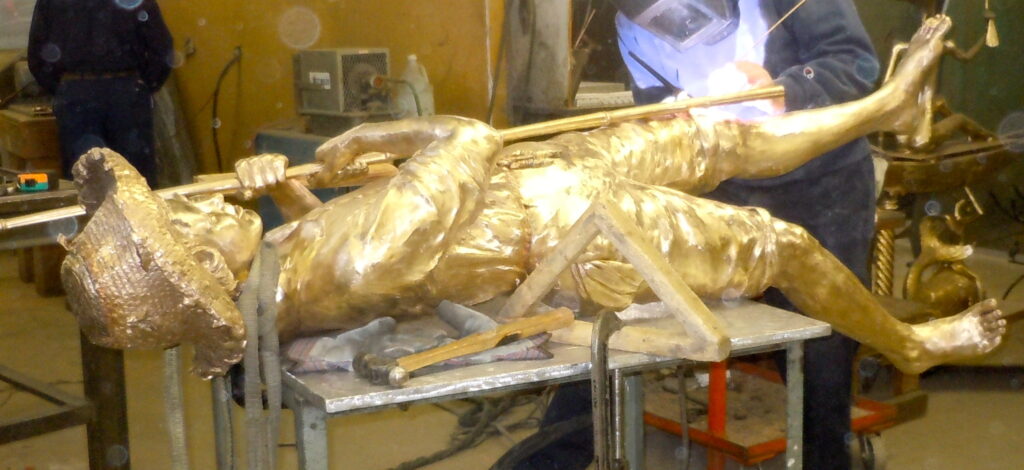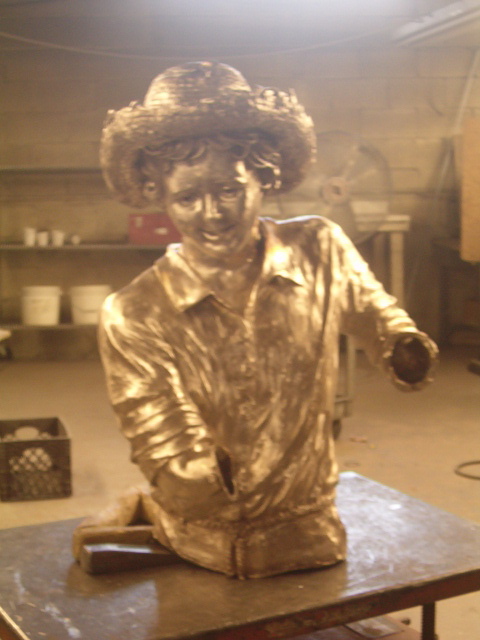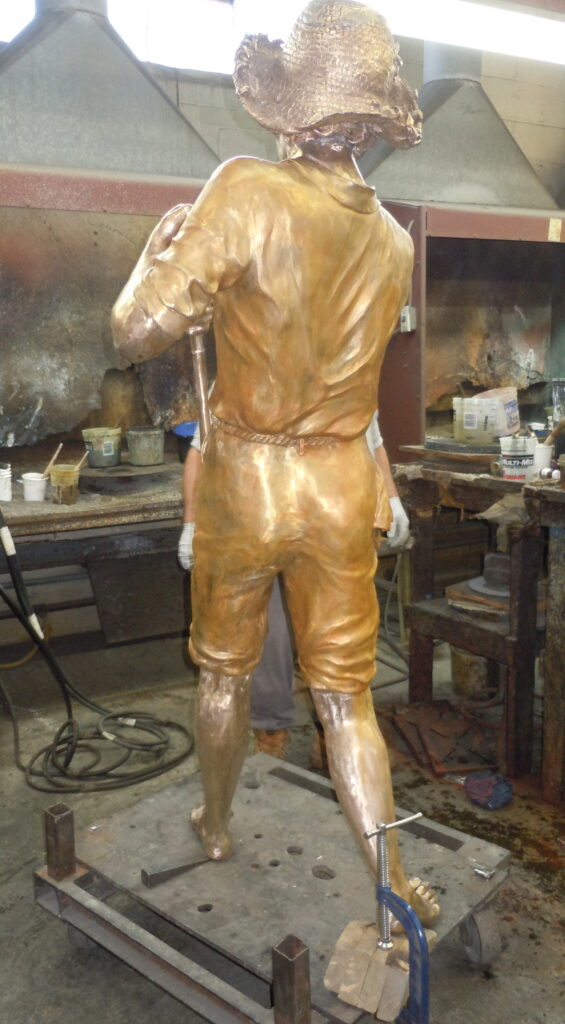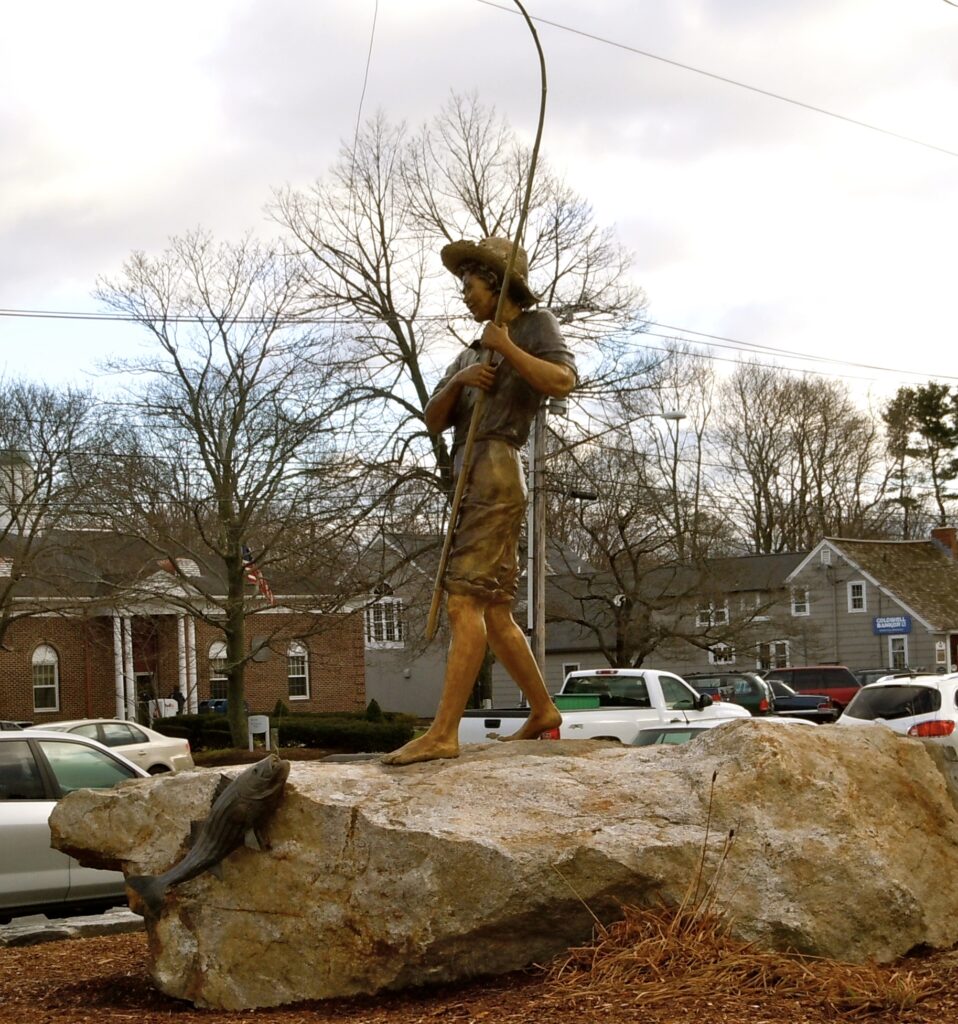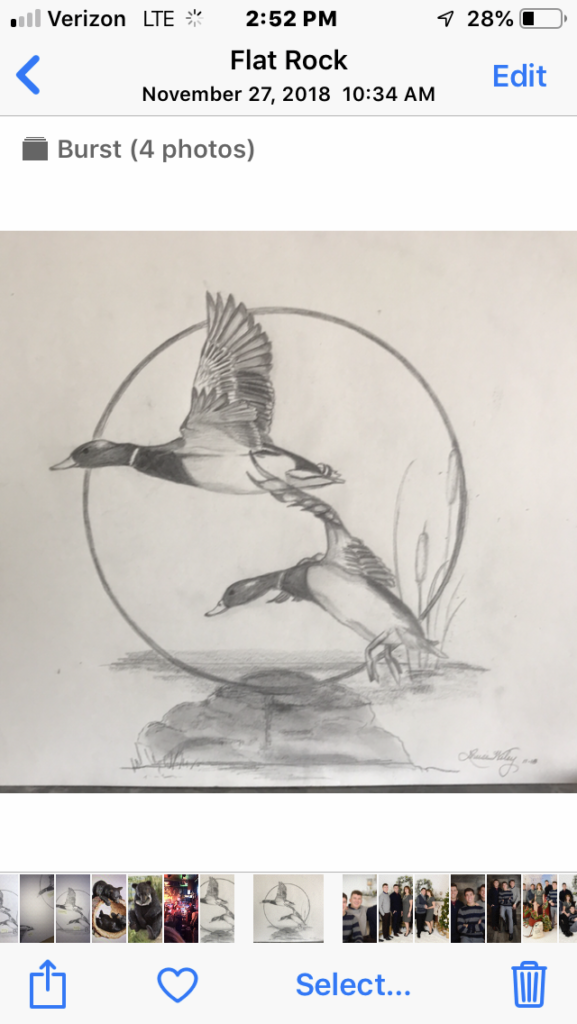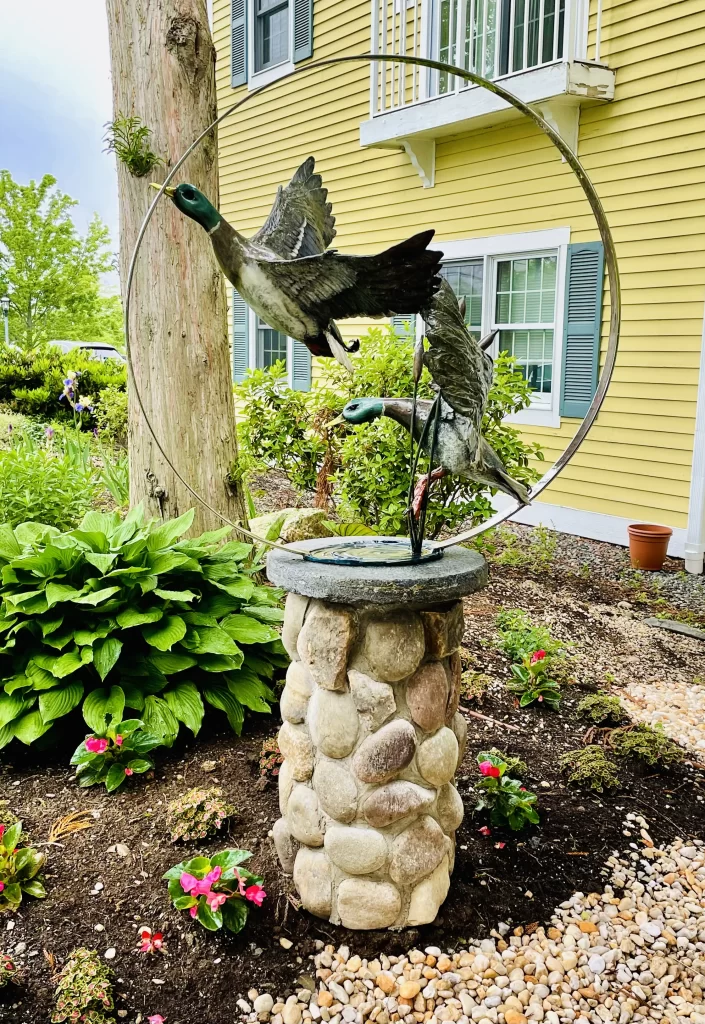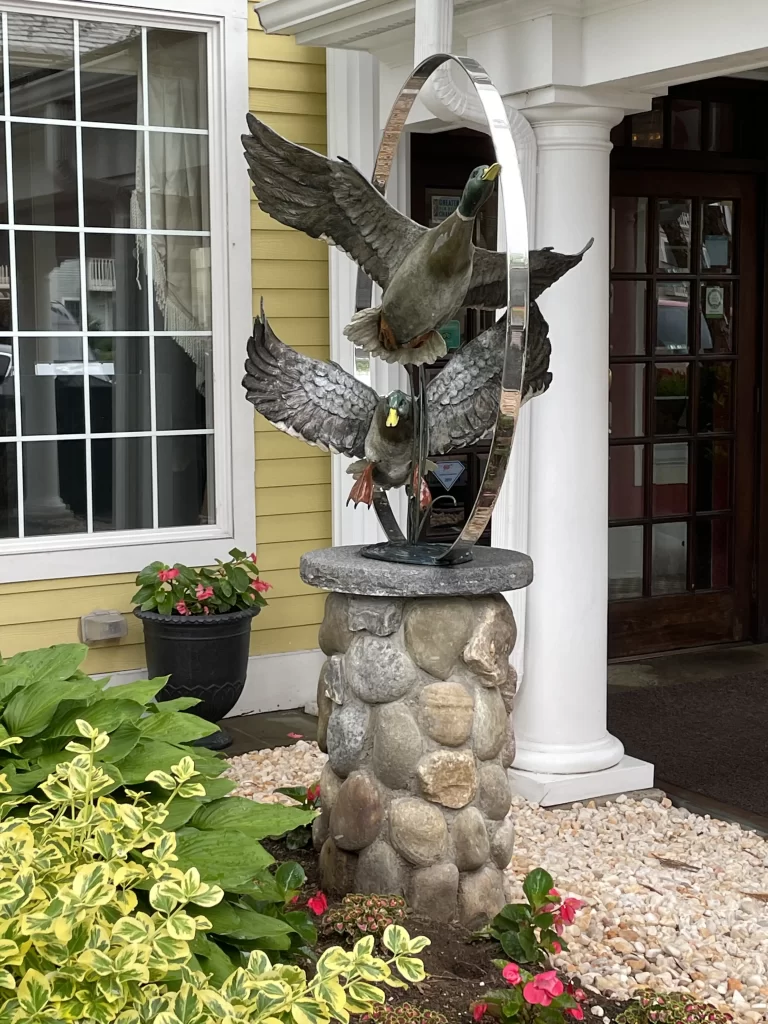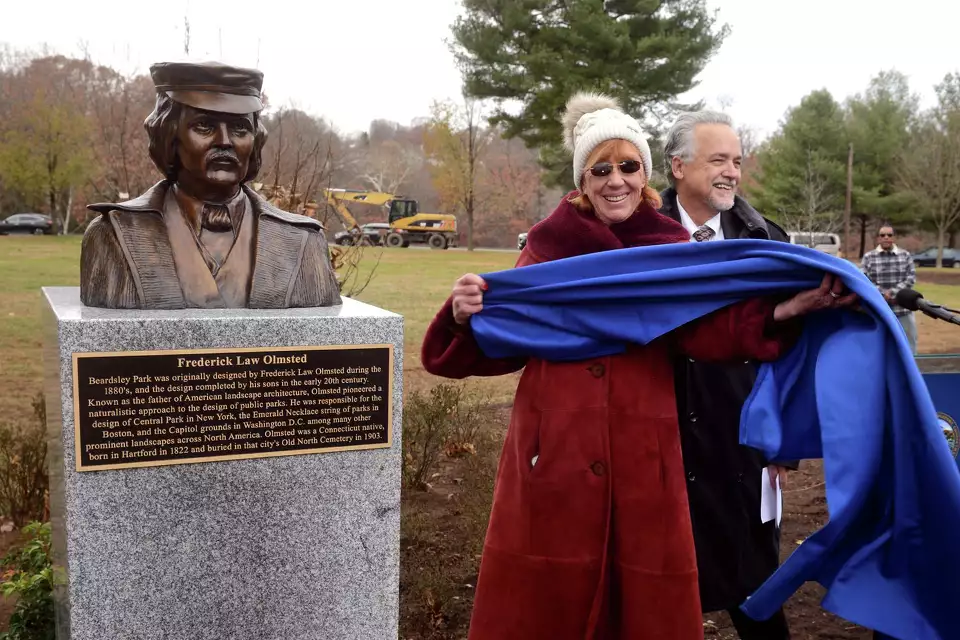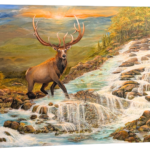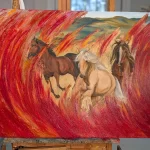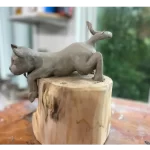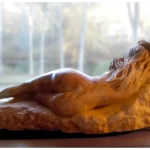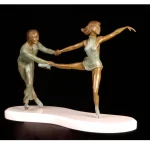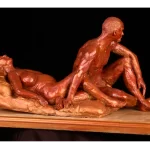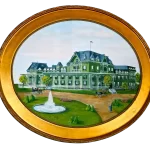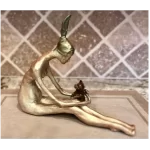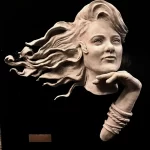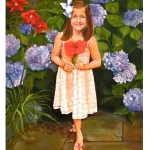See the Process of Creating
Fishing Boy: Old Saybrook Chamber of Commerce Statue
This image shows the armature, the internal framework that serves as the structural foundation for the larger statue’s production. Made from copper pipes, wire mesh, and reinforced materials, this armature provides stability and support for the clay or other sculpting materials that will be applied in the next stages. This framework ensures the statue maintains its form and balance while allowing for precise detailing in the final sculpting process.
This image captures the second stage of Louise Wiley’s statue creation, where she has meticulously sculpted the final form in clay, refining every detail over the armature. With realistic proportions, textures, and expressive features now fully developed, the piece is prepared for the next phase. Once completed, the clay model will be used to create a mold for casting in bronze, ensuring a durable and lasting final sculpture.
Now, molten bronze is poured into the investment mold, replacing the wax model and taking its final shape. Once cooled, the mold is broken away, revealing the raw bronze sculpture, ready for finishing and patination. This marks the transformation from clay to wax to bronze, finalizing the durable, lasting artwork.
Now, the bronze sculpture is fully cast and undergoing the final finishing process. The seams from the casting are welded together, and any imperfections are carefully refined through grinding and polishing. The surface is then prepared for patination, where chemicals are applied to achieve the desired color and finish. This stage ensures the sculpture’s durability and enhances its visual appeal before installation.
The final bronze sculpture is now being installed at its designated site. Using heavy machinery, the statue is carefully lifted and positioned onto the prepared base, ensuring stability and alignment. This marks the completion of the casting and finishing process, with the artwork now permanently placed for public display.
Ducks Playing in a Fountain
At this stage, the bronze cast pieces are being welded together at the foundry, with individually cast sections carefully assembled and seamlessly connected through precise welding. The circular frame provides structural balance, while the stainless steel circle is wrapped for protection during handling to prevent scratches or damage. With fine details polished and refined, the sculpture is nearly ready for the final patination process, which will add color and depth before installation.
Statue of Frederick Law Olmsted in Park
Louise Wiley began the bust design with extensive research and sketching, ensuring historical accuracy. She sculpted the piece in clay, capturing Olmsted’s likeness before creating a mold and casting it in bronze using the lost-wax method. After cooling, the sculpture was polished, refined, and given a patina for its final finish. The entire process took four to five months before installation in Beardsley Park.
Known as the father of landscape architecture, Frederick Law Olmsted designed Central Park, the U.S. Capitol Grounds, and many urban parks, including Beardsley Park in Bridgeport. His visionary designs emphasized accessibility, beauty, and social harmony, shaping modern urban planning. His legacy endures through the countless public spaces he created, blending nature seamlessly into city life.

